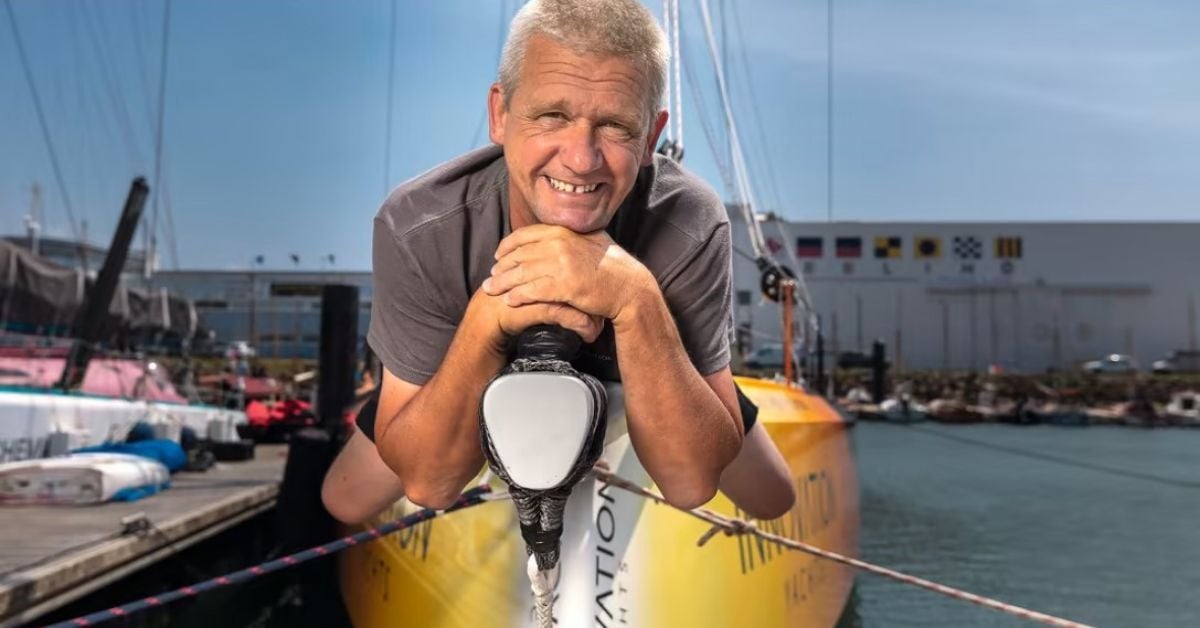Designs for life - Rooster's sustainability strategy

What are the realities of switching to a sustainable manufacturing model and how can you ensure your eco labels ring true? Marine Industry News talks to a UK brand that’s made the change.
2021 was a good year for Rooster, the Hampshire-based company which makes sailing clothes (wet and dry) and dinghy kit. Under the sustainability, design and development leadership of Kate Morrison, the company launched new neoprene products. She says it was a ‘big jump’.
"We changed factories to do it, payment terms were a lot harder. The cost of product was substantially more than we were paying before,” she says.
But it’s a strategy which has worked.
The updated Supertherm and Thermaflex ranges are made with water-based glue, dope dyed yarns, limestone neoprene, and recycled polyester.
“The process and the new factory are so much more sustainable,” says Morrison, “which took us to the next level in design.”
The sustainable-led design improvements included improved true-to-size fitting (with preshaping specifically designed for use on the water), which has its own environmental impact of minimising the number of returns.
Morrison studies all facets of each product’s life cycle prior to development, understanding its sustainable impact from manufacture, through distribution, to end-use and re-use.
“You can have a really sustainable process but source really unsustainable materials. It has to balance throughout,” she says.
Morrison thinks while it’s possible that most of the top neoprene suppliers are now using limestone-based neoprene instead of petroleum, and that “most companies are now pushing for environmental design, especially in a sport that uses the environment”, there are still plenty of challenges over and above balancing the component/process equation.
One of those is helping consumers understand a product’s whole life cycle credentials.
“You get some people who complain about plastic packaging – they demand recycled paper. But they don’t have any facts behind their demands,” says Morrison. “Some of our products might be in transport or in a warehouse for up to two to four years and that gets very hot and very cold temperatures. We have to consider the product’s life, so we don’t put our products into unsuitable packaging – like compostable bags (whose life span may only be one and a half to two years) – for the sake of saying it's recyclable.”
She notes that what is eco-friendly in some people’s eyes may wear down in a week… and it’s her role to design the best product, made to last for years, which is as sustainable as possible. Sometimes that means taking a pragmatic approach.
That’s why Rooster still uses protective plastic bags. They’re made from recycled plastic, which can be recycled again. As Morrison says, the bags have a constant life cycle.
“Plastic bags also have a reduced weight, which is better for us for shipping in containers.”
Extending good practice, Rooster sources and manufactures the majority of its products in the Far East where eco friendly practices are developing.
“The Far East is changing,” says Morrison, “but the mindset is still a couple of years behind us. Getting ‘normal’ fabric straight off the market is easy, but to get recycled fabric we still have to order it specifically. It is changing though, even compared to a couple of years ago, we are now seeing more factories offering recycled and eco friendly fabrics.”
The active understanding and marketing of sustainable practices is widening.
“Neoprene factories are helping in driving the industry forward,” she says. “The leaders use water-based glue, dope dyed yarns and eco friendly practises, and are pushing forward. Others are starting to follow. Yes, everything is more expensive but people are going for the best.”
Morrison’s entire focus is now to make the product as good and as environmentally sound as possible.
“The first thing we ask suppliers is about their eco goals, and where they are trying to get to,” she says, “you need a lot of people to push to make a big change. It’s already happening, and the more people that push, the more it’ll happen.”
“While some companies are very stuck in driving to make the highest profit – at all costs – at Rooster we’ve got a young team with a fresh mindset, wanting environmentally sound outcomes."
Morrison’s tips for sustainable development
SAVE SAMPLE ROUNDS:
Take design specifications back to critical concepts. Make specs as detailed as possible, including what is wanted from manufacturing technologies. Vagueness leads to wasted samples, wasted manufacturing time, wasted shipping time etc.
ALWAYS PUSH: Ask for sustainable fabrics and certificates. It’s easy for factories to say they can’t do it, or to say those fabrics need really high order volumes. There’s always a loophole to get to a better fabric, like a surcharge to order less. ‘Lots more money’ warnings might actually equate to 10p on each product.
WASTE NOT: Rooster’s pandemic face masks used offcuts from jackets which were being made for a Chinese market, using fabric which would have ended up in landfill.
This article was originally published in Marine Industry News' print edition.
Share your stories on leisure marine industry with us
Do you have an innovation, research results or an other interesting topic you would like to share with the leisure marine equipment industry? The METSTRADE website and social media channels are a great platform to showcase your stories! Let us know via metstrade@rai.nl
Are you a METSTRADE exhibitor?
Make sure you add your latest press releases to your Company Profile in the Exhibitor Portal for free exposure.


